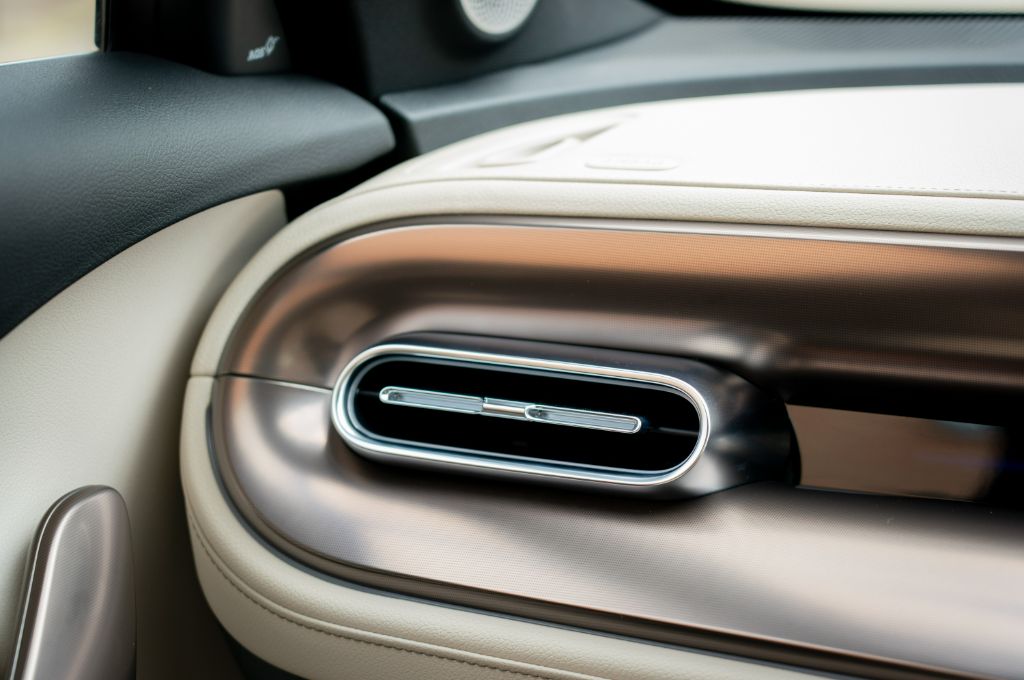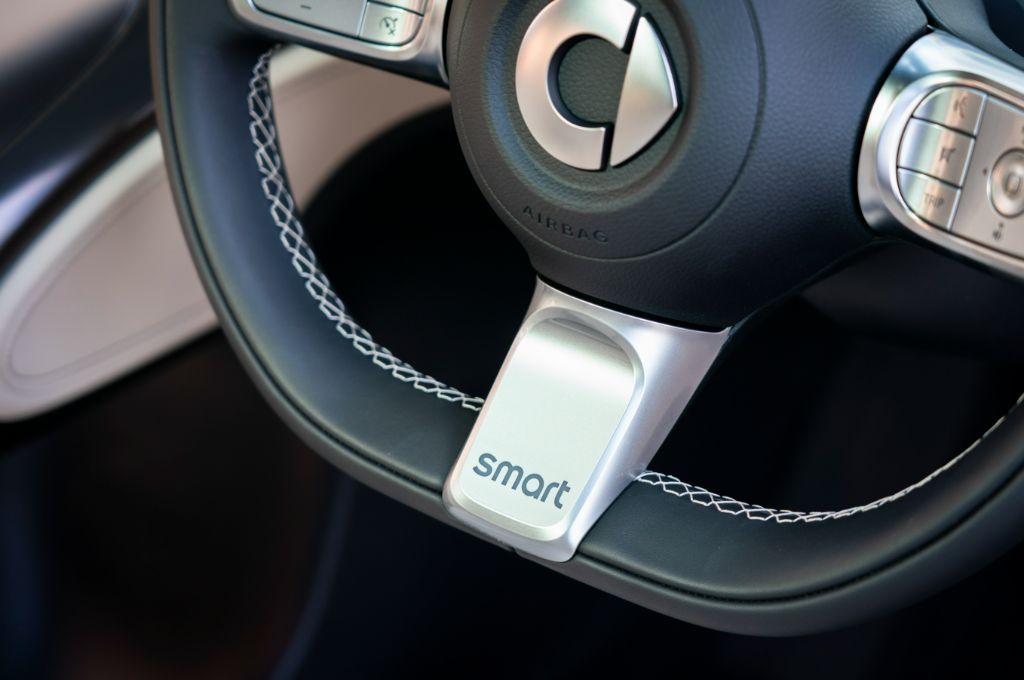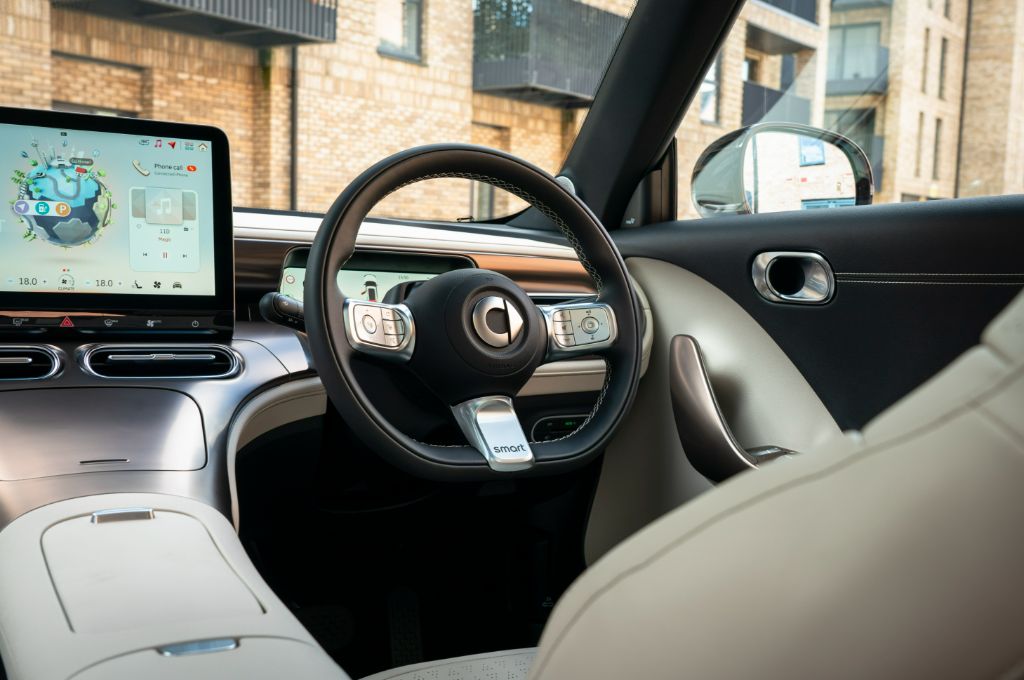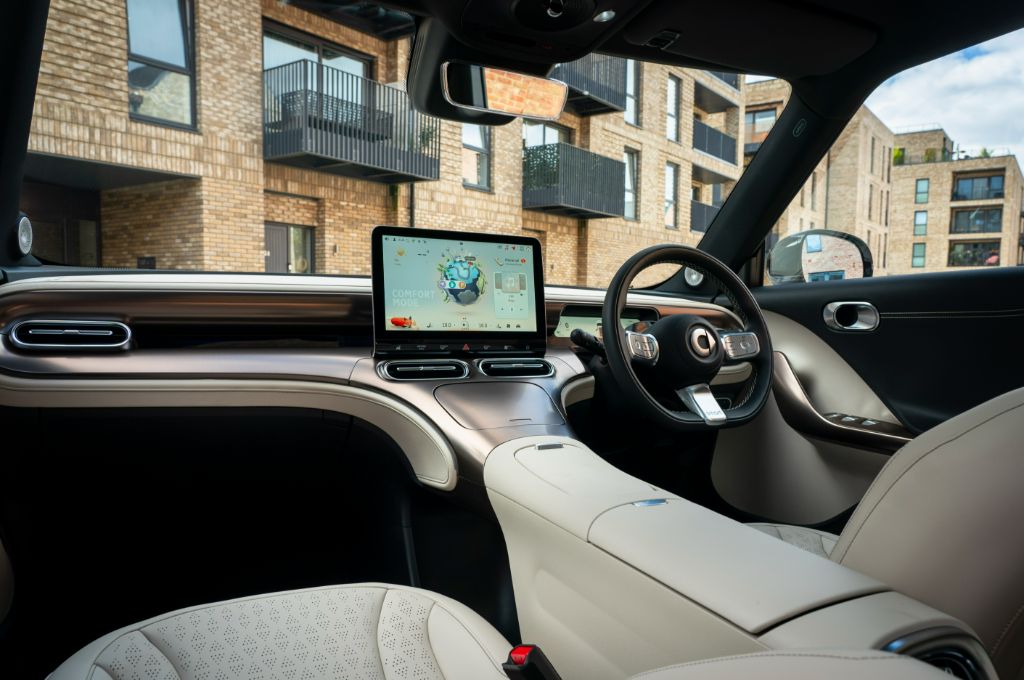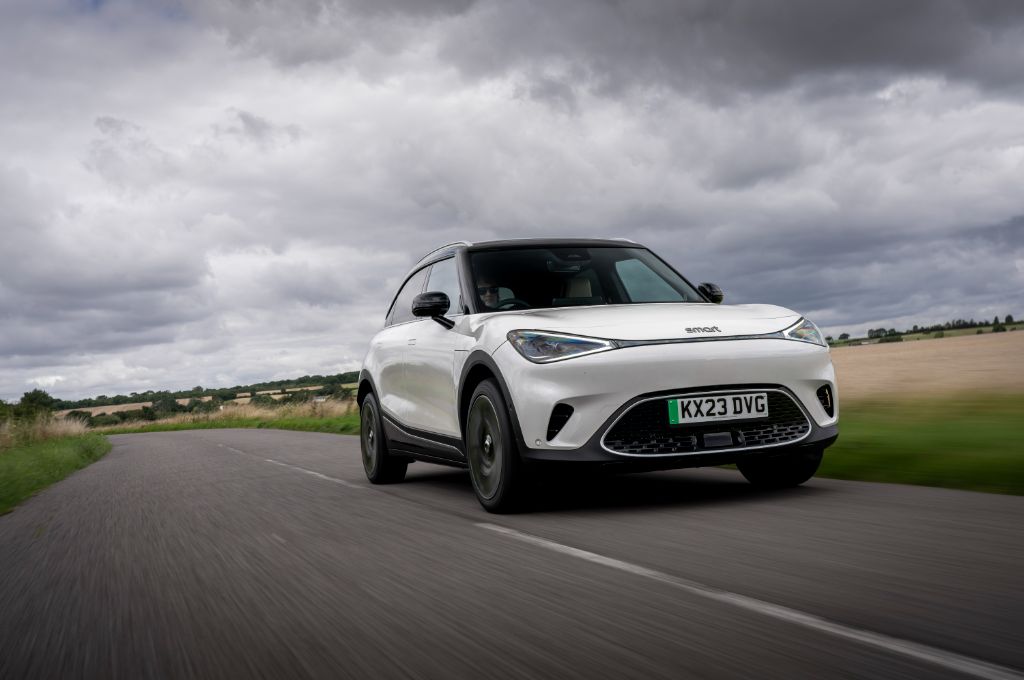Introduction and model history
Developed as part of a joint venture between Mercedes and Chinese electric car giant Geely, the #1 (which Smart bosses insist should be called ‘hashtag One’) will be the first of a range of all-electric cars that will be sold both in China and Europe. Although Smart has traditionally been associated with small cars – the original CityCoupe and ForTwo were famed for their remarkably compact size – the #1 marks the start of a new era for the brand.
The new model is based on a set of underpinnings developed by Geely (owner of Lotus, Volvo, Polestar, among others) and known as the Sustainable Experience Architecture. It has a tall stance for a five-seat hatchback that’s shorter than something like a Nissan Leaf, but wider and taller - more square - and kind of soft-looking. Rivals include smaller hatches like the Renault 5, Mini Aceman and Volvo EX30, through to more family-oriented options like the Kia EV3 and VW ID.3.
The #1 is 4.3 metres long, 1.8 metres and 1.6 metres high, which makes it bigger than Vauxhall Corsa E and about a fraction smaller than the Volkswagen ID.3.
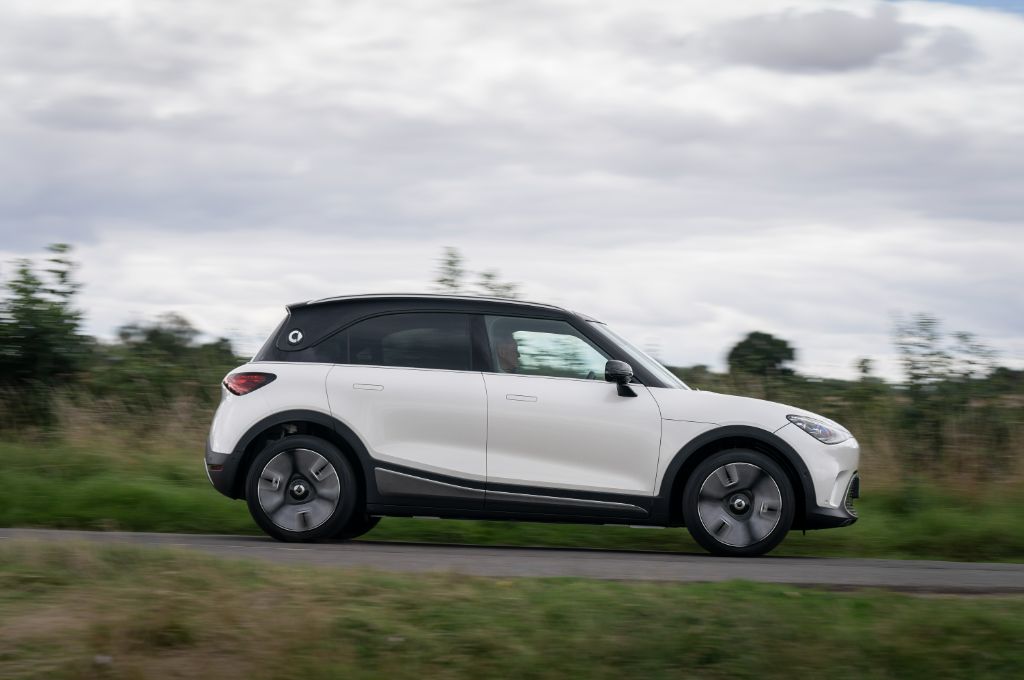
Smart has made sure that the bulbous shape makes the best use of interior space, and that the user interfaces are all top notch. The wheelbase – the space between the wheels – is 2,750mm, more than the overall length of the original Smart.
This delivers distinctly un-Smart-like levels of interior space. Thanks to a flat floor and wheels pushed to the corners, the interior offers generous levels of rear legroom.
The boot is small though - it can hold 273 litres of luggage with the rear seats in place, compared to 385 litres in a Volkswagen ID.3. A small 15-litre frunk sits underneath the bonnet, which is largely useless unless you need to hide a packet of wine gums. Smart say it will hold a charge cable and have the photos to prove it, but you’ll need super packing skills to cram it in.
In the cabin, Smart has incorporated an unusually high centre console that divides the driver and passenger areas. The main dashboard rail hosts a large 12.8” high resolution touch screen. A second 9.2” digital instrument cluster ahead of the steering wheel and 10’’ Head Up Display (HUD) ensures that drivers have plenty of information beamed at them. Smart says the car is aimed at younger, tech-savvy buyers, so it plays host to a raft of connectivity features.
The infotainment system features a virtual assistant in the form of… a cartoon fox. The reason for this isn’t immediately clear. Are foxes particularly helpful at finding things apart from bins? While the avatar is fun, we’d rather Smart spent time improving the usability of it rather than giving drivers a cartoon fox to explain how to adjust the mirrors.
Fox aside, it’s an okay system. We’re not fans of having on-screen air-con and heating controls and the animations really seem to slow everything down. And because everything from the mirror controls to the heating system are all controlled by this, there’s a lot going on.
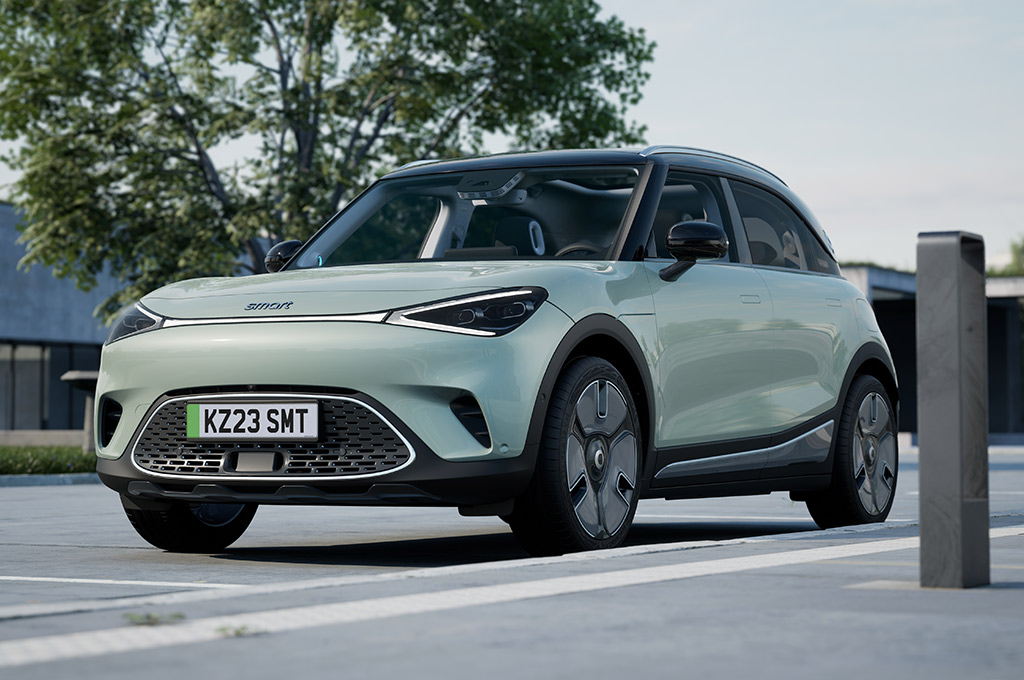
Battery, range and charging
The #1 now comes with a choice of two batteries - the entry-level Pro trim has a 49kWh pack, while the more expensive versions have a 62kWh battery. The Pro has a WLTP figure of 193 miles while the other models vary between 260 and 273 miles depending on options such as wheels. The Pro has impressive 130kW DC fast charging capability, while the bigger battery models get a boost to 150kW. This will, according to Smart, will allow the #1 to charge from 10-80% in under 30 minutes. AC charging is at a maximum of 22kW on the Premium and Brabus, but the entry level Pro and Pro+ models charge at a maximum of 7.4kW. That might be frustrating at one of the newer public chargers.
All but the entry level Pro and Pro+ models get a heat pump as standard, which promises to minimise the range loss when the thermometer dips. We’d expect the #1 to return around 250 miles of range in warm weather and 220 miles in winter.
Motors, performance and driving
In terms of layout and performance, the #1 will feature a single, rear-mounted 268bhp electric motor that generates 343Nm of torque. It's capable of accelerating from 0-62mph in 6.7 seconds and has an entirely unnecessary top speed of 112mph.
That 268bhp is the same as the big, posh cars like an Audi Q7 and in a relatively small car like the Smart, it means it accelerates away from a standstill in a way which will surprise most sportscars.
Drivers have a number of different regen options to choose from, although none of them quite hit the mark and you need to use the central screen to switch between them. A button on the steering wheel or paddles would be much easier to use. Smart claims that the e-Pedal mode allows one pedal driving, but we found that it lacked the braking power to deliver it. We need a bit more work on this please, Smart.
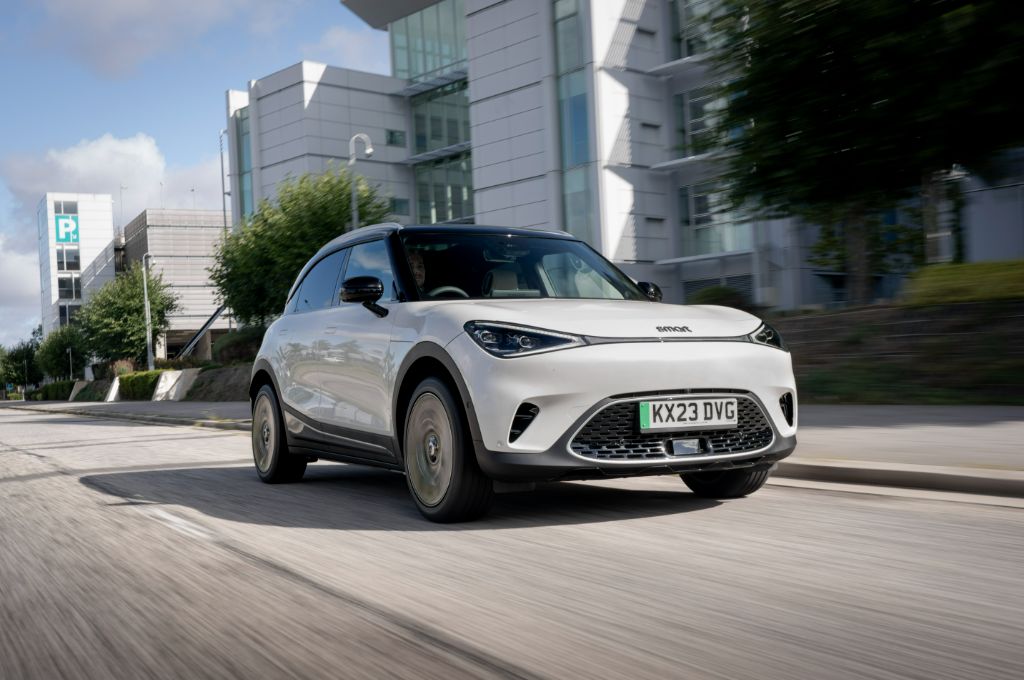
Other than that, the #1 is a very pleasant car to drive. The suspension set-up is pretty goldilocks – not too hard, not too soft and it soaks up bumps and lumps in the road very well. And while the handling in corners isn’t anything to write home about, there’s very little body roll and for the most part it feels composed and balanced. The setup is aimed more at comfort than driving fun but that suits the car well. A quiet motor and decent sound proofing also add to the feeling of relaxation on the move.
The #1’s driving refinement is further helped by its rear-wheel drive layout which means the front wheels just have to steer rather than juggle power delivery at the same time. 0-62mph takes an impressive 6.7 seconds - and it feels quicker than that.
If the standard model is a little too well-mannered for you, Smart also offers a range-topping Brabus version with 422bhp, all-wheel drive and a 0-62mph time of 3.7 seconds. The downside? It’ll cost you £43,450 - that’s £4,500 more than the Premium version we tested.
Interestingly, the #1 is one of just a handful of small (ish) electric cars that can tow. Choose the optional tow bar accessory and you’ll be able to tow a braked trailer of up to 1,600kg.
Verdict
The reinvention of Smart may upset those who loved the brand’s bold vision of personal mobility, but in the car industry, being radically different rarely pays the bills. The #1 is arguably the most conventional Smart ever made, but is none the worse for it. Joining forces with Geely has been a clever move for Mercedes, giving the German brand access to the very latest battery tech while keeping hold of the design reins. Apart from the name (which is unforgivably bad), the #1 is a fine car and displays just enough Smartness to warrant the badge. It’s not quite the bargain many would have hoped, but as a piece of design and engineering, it’s a great package.
Like the Smart #1? Try these...














